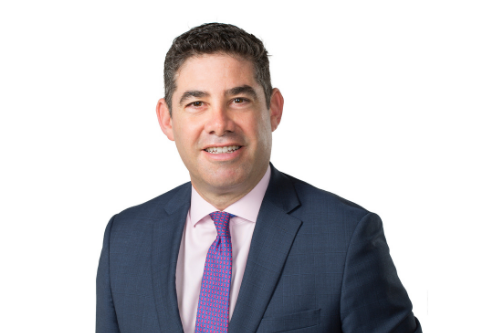

Following a year dominated by pandemic woes and amid a particularly hard insurance market, it’s perhaps difficult to single out the biggest challenge facing the insurance industry. In the view of Aon Australia chief executive James Baum (pictured), though, there is one major issue that requires laser focus.
In an interview with Insurance Business, Baum stated: “We have this huge concern around the relevance of the insurance industry going forward, and what I mean by that is this innovation gap that Aon has been talking about. GWP as a percentage of GDP has been in decline for 30 years.”
According to the CEO, traditional insurance programmes have become less and less relevant as more and more companies put value on intangible assets.
“These people need their balance sheets protected,” he explained, “they’re worried about the intangible, and that’s this growing innovation gap. Really, this is not a 2021 challenge; this is an ongoing challenge, and we, as an industry, need to embrace that and really find a way to close that gap.
“To narrow that down to a specific example, there’s lots and lots of talk around cyber and the industry’s view that it’s incredibly hard to respond to because they don’t have the data to be able to predict the future. That’s something we need to solve - and ensure that the industry can actually think more predictably about the future.”
Baum cited the LMA (Lloyd’s Market Association) 5400 exclusions. Under the clause, coverage isn’t provided for cyber incidents involving malicious acts. Meanwhile, policies cover physical loss or physical damage to property with the added condition that a non-malicious cyber incident resulted in a fire or explosion.
The broking boss asserted: “These clauses don’t do what insurers say that they’re designed to do. They imperil the validity of insurance policies, and it’s just not good enough. As an industry, we absolutely need to recognise this issue; we can’t just sit there and say it is too hard and therefore we are going to walk away.
“The business world has relied on the insurance industry to let them do what they do. And, unless we solve this cyber issue within our industry, we’re going to let the business world down and that’s not acceptable. Certainly, from an Aon perspective, we are laser-focussed on this issue around the innovation gap. That’s what we’ll be driving throughout 2021 and into the future.”
Akin to the above is the matter at the centre of the ongoing business interruption test case in Australia, the resolution of which is of utmost importance.
“If I step back from the issue itself, again, it’s one of these challenges that the industry also needs to remember,” said Baum, “that as we provide insurance contracts or insurance policies for our clients, we need to be really careful and clear with the language that we use, because that’s what this conversation is actually about.
“That’s why there’s a dispute, because the contract language is not clear, and we shouldn’t find ourselves in that situation. That is not exclusive to COVID and pandemics; that’s true more broadly and that’s actually the piece that I’m alluding to in terms of cyber and the LMA 5400 clause. That clause does not do what people say it does, and that’s going to be an issue for the industry.”
The chief executive added that it’s important to see to it that policyholders are part of the whole process.
He told Insurance Business: “Ultimately, our role is to create excellent outcomes for our clients but also making sure we take them along for that journey. The insurance market is in the state that it’s in for a number of reasons in terms of sustained losses, low interest rate environments, etc., but it’s still incumbent upon us to ensure that we represent the needs of our clients fully.
“We negotiate on behalf of our clients to their benefit while helping them understand some of the challenges that the insurance market has, but also giving them tools and strategies to deal with those challenges themselves. That’s a big part of what our focus, from a client perspective, is all about.”
Meanwhile, internally, one of the top priorities has been to ensure that colleagues were well and “in the best possible space they could be” throughout the coronavirus crisis and beyond. Also high on the agenda is ‘reimagining’ the future of work as people begin to return to the workplace with a focus on flexible working.
“One of the great things for us in Australia is we’ve been able to really help the rest of the world start to imagine what this future looks like, because we’re kind of living it already,” highlighted Baum. “We’re incredibly blessed, from that perspective, and excited by the idea that [our global colleagues] will join us shortly.
“Then obviously, from an Aon perspective, the other piece that’s near on the horizon is our combination with Willis Towers Watson. We’re all really looking forward to coming together as one organisation sometime in the first half of this year, so that’s a super exciting time for us.”
